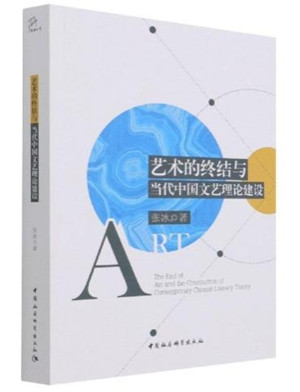
. > WHAT'S NEW > BOOKS
The end of art and Chinese reflections
Author : WANG HUANHUAN Source : Chinese Social Sciences Today 2023-07-20

The End of Art and the Construction of Contemporary Chinese Literary Theory
In 1984, American scholar Arthur C. Danto wrote a paper entitled “the End of Art,” expressing his opinions on the status of art since the 1960s. In the late 20th century, the proposition was introduced to China.
The End of Art and the Construction of Contemporary Chinese Literary Theory, by Zhang Bing, a professor from the College of Literature at Southwest University, depicts the genealogy of knowledge surrounding the end of art, and delves deep into the construction of the discourse system of contemporary Chinese art and literature theory.
Zhang generalizes Western connotations on the topic into three aspects. The first connotation refers to the “death” and “extinction” of art, represented by Berel Lang, who compiled a series of articles on the theme, titled “The Death of Art.” The second refers to the “decline” of art. A specific type of art only prospers during a certain historical stage. As history marches forward from one stage to the next, old artistic forms are bound to decline, while new patterns emerge. According to Karl Marx in his Introduction to A Contribution to the Critique of Political Economy, ancient Greek myths could only exist in a primitive society where its productive forces were relatively backward. The third identifies an artistic concept that no longer aligns with contemporary artistic practices or is gradually being discarded. This perspective is shared by M. Weitz and other analytic aestheticians who argue that art is an open concept. According to them, certain artistic forms are abandoned when they no longer possess significant explanatory power, ultimately leading to their demise.
Following its introduction, the proposition of the end of art did not receive much attention from domestic scholars until the publication of “Will Literary Study Survive the Age of Globalization?” by American scholar J. Hillis Miller, in the first issue of Literary Review in 2001. In contrast to interpretations by Western scholars focusing on the potential meanings and boundaries of the proposition, Chinese scholars’ perspectives on this topic primarily manifest in three main aspects: analysis and criticism of the crisis in Western art; judgments regarding the similarity of cultural circumstances in China at the time; comparing Chinese and Western cultural contexts, and negating the theoretical possibility of the end of art occurring in China.
The end of art in China presents itself with a completely different development tendency from the West. In the West, the proposition first appeared in theory and later in practice, while in China it has unfolded in a reverse order. In addition, the philosophical genealogy of the proposition is not closely connected with China’s indigenous art theory. Chinese scholars take more interest in the field of literature and urban cultural life. Furthermore, while Western discussions are centered around the impact of new media technologies on art, Chinese scholars shift the contextual center and underscore the impact of mass culture on art, thereby directing attention towards local knowledge production.
Wang Huanhuan is an associate professor from the School of Chinese Language and Literature at Zhengzhou University.
Ye Shengtao made Chinese fairy tales from a wilderness
Ye Shengtao (1894–1988) created the first collection of fairy tales in the history of Chinese children’s literature...
-
How northern ethnicities integrated into Chinese nation
2023-09-18
-
Mogao caves
2023-09-12
-
Mogao Grottoes as ‘a place of pilgrimage’
2023-09-12
-
Time-honored architectural traditions in China
2023-08-29
-
Disentangling the civilizational evolution of China
2023-08-28
-
AI ethics in science fiction
2023-08-23













 2011-2013 by www.cssn.cn. All Rights Reserved
2011-2013 by www.cssn.cn. All Rights Reserved